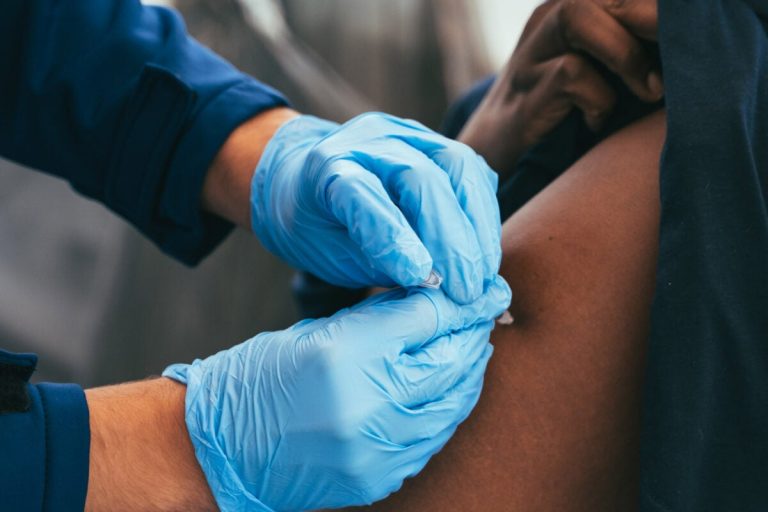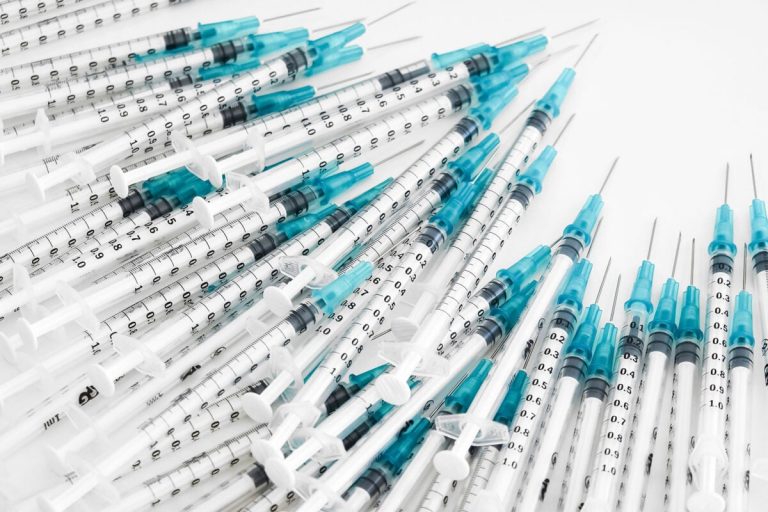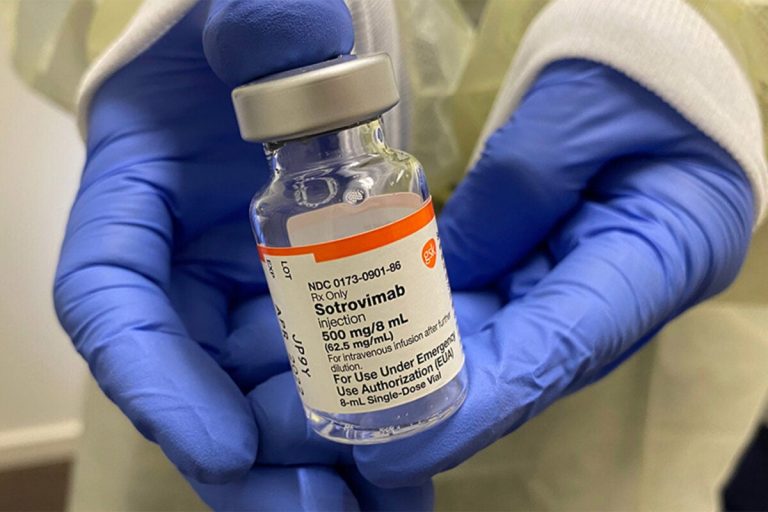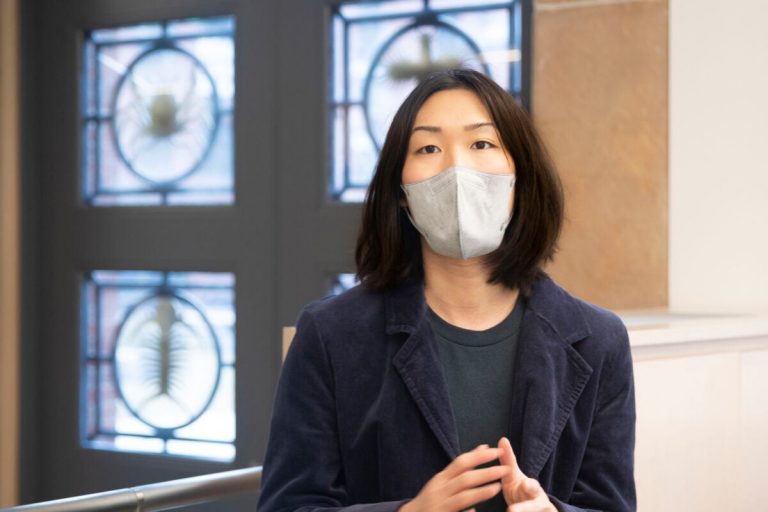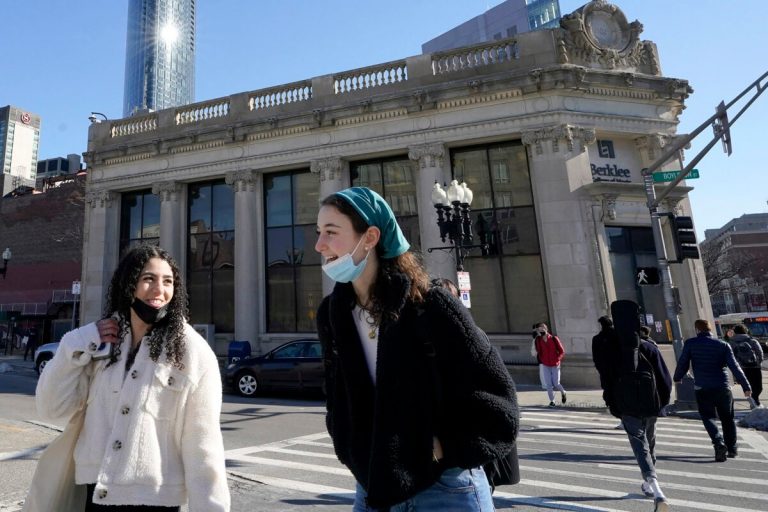Researchers at Harvard Medical School have repurposed anthrax, a bacterial toxin known for its lethal effects, into a potent pain blocker that could someday serve as an alternative to drugs with addictive side effects. The work is described in a new paper in Nature Neuroscience.
Collaborating with other institutions and industry, the lab of Associate Professor of Immunology Isaac Chiu found that injecting anthrax toxin into the nervous system selectively quieted pain fibers and provided a novel way to target pain. The Gazette spoke with Chiu about the research, which has not yet been tested in human trials. The interview has been edited for clarity and length.
Q&A
Isaac Chiu
GAZETTE: It seems counterintuitive that anthrax — a toxin that causes deadly disease — might also be a painkiller. Was that what you set out to study or was it something you came upon as you were studying something else?
CHIU: Pain is a major area of research because, while acute pain can warn us of something that’s damaging, chronic pain arises in inflammatory diseases and conditions that affect the nervous system and is not necessarily good for us. Many of the conditions that cause chronic pain are very hard to treat, so we need to develop new ways of targeting pain circuits in the brain as well as in the body’s periphery. We mined gene-expression data which we and others have collected on pain fibers and many other types of neurons. My lab is focused on how microbes interact with neurons. We were looking at what microbe-related genes pain fibers expressed that other neurons don’t, and one gene stood out, which is the receptor for anthrax toxin. It was not like we were looking for anthrax receptors, but that’s the one that popped out.
GAZETTE: What diseases is this chronic pain associated with?
CHIU: Chronic inflammatory pain arises as a result of inflammation in tissues, which includes diseases like rheumatoid arthritis, osteoarthritis, cancer, and inflammatory bowel disease. The second category is neuropathic pain, meaning that it arises due to damage to the nerves. That could be a result of an injury or it could also result from things like chemotherapy-induced neuropathy. (This is a big problem for cancer patients — they often stop taking chemotherapies because they’re in so much pain.) Another cause is diabetes, which leads to nerve damage. In mouse models of inflammatory and neuropathic pain, we found that the anthrax toxin was able to block pain.
GAZETTE: You talked about the need for new painkillers — are you thinking about opioids and their impact on society?
CHIU: Not specifically, but in the field of pain research, this is very important. The opioid crisis is still a major problem and finding solutions to develop non-opioid analgesics is a top priority of the National Institutes of Health. Chronic pain affects about 50 million Americans. The numbers are sobering and there is a need for better treatments. Opioids can be effective at blocking pain, but the problem is that they also have off-target effects. The reason is that the receptors for opioids are not just in pain fibers, they also act on regions of the brain that mediate breathing and reward. That’s why there’s a problem with opioid painkillers: they’re addictive and, if they cause a blockade of breathing circuits, lethal. We need to find molecular targets that can block pain that are not going to cause addiction and not cause off-target effects.
GAZETTE: Are the receptors for anthrax toxin indeed very specific to the pain fibers?
CHIU: One of the things that we were struck by is that the high-affinity receptor for anthrax toxin, if you compare across the brain and across the nervous system, seems to be highly expressed in pain fibers, but absent in brain or spinal cord neurons. I have to qualify this — the receptors are also expressed in many non-neuronal cells. That’s why anthrax is lethal in humans: it will target blood vessels, it will target the liver. But in our study, we were able to largely limit it to pain fibers by injecting the toxin only into the nervous system, between the vertebrae in the spine.
GAZETTE: We should highlight that this research is in an early stage, and that part of the remaining work is addressing safety issues in a way that would be practical in the clinic.
CHIU: Yes, and all of the work so far is preclinical, in mouse models. To even get close to clinical application, safety is a big part of it. There are some potential ways of getting at it, though. Like I mentioned, through injection into the spine or cerebrospinal fluid, we could limit it to the nervous system. Another way is to engineer the toxin to deliver different cargoes, and if we make that cargo also more specific to neurons, that could also allow it to be safer.
GAZETTE: That was another part of your work. You used anthrax proteins to create essentially a cargo hold for botulinum toxin, and then delivered that precisely where you wanted it. How did you get that idea? And is botulinum for some reason a better analgesic than anthrax?
CHIU: Botulinum toxin is also a bacterial toxin that targets neurons. Botulism, which is caused by C. botulinum, is due to botulinum toxins binding to nerve terminals and silencing the neurotransmission of the nerves to the muscles. Botulinum toxins are already used widely for cosmetic use and treatment of diseases, but practitioners are very careful to inject it locally so it doesn’t have safety issues. Now, the cargo idea — we’re not the first, and in fact, we were building off many other labs’ work, including some of our collaborators: Steve Leppla’s lab at NIH and Brad Pentelute’s lab at MIT, where they decided to use the anthrax system to target tumors.
In that case, they took advantage of the fact that the anthrax system is a two-component system. There’s an A part and a B part, and the A part targets the receptor, while the B part is what the A part delivers into the cell. They’ve engineered the B part to deliver things to kill the tumor. In our case, we thought, “Can we engineer the B part to deliver something that can silence neurons?” Botulinum toxin came to mind. So we take advantage of two different bacterial toxins and combine them into one system.
GAZETTE: So it shuts off signaling after the point of injection?
CHIU: That’s right. The pain fiber can no longer transmit signals to the next neuron in the spinal cord. Now, botulinum toxin itself can block pain; the only thing is that it’s not specific for pain fibers. That same toxin will actually bind to motor neurons and paralyze your face. Here, we’re making it so that it is more specific to pain fibers. We actually show in our paper that our combination toxin does not affect neuromuscular junction signaling. What we’re excited about is that, with protein engineering, we can think about other molecules besides botulinum toxin to put into pain fibers with the same system.
GAZETTE: Why would a microbe that we view as being disease-causing have these abilities?
CHIU: There are advantages for microbes sometimes to exploit or hijack pathways in hosts. This is all very speculative, but one potential thing would be by blocking pain, they’re going to spread more efficiently. Anthrax is an environmental microbe and when livestock get infected with cutaneous anthrax, they form these coal-like lesions that are painless. Maybe this helps the bacteria get from one host to the next host. Our lab has been interested in these sorts of interactions of microbes and hosts. Tuberculosis, for example, has a molecule that can activate neurons to induce cough that could allow its spread. We don’t know for sure why the anthrax bacteria blocks pain, but it could be advantageous for its survival on the host or its spread to the next host.
GAZETTE: What happens next?
CHIU: There are a few outstanding questions. On the basic side, we know that one of the specific anthrax toxins, the edema toxin, seems to block pain when given to mice, and part of that mechanism is that it seems to silence neurotransmission from pain fibers. We still need to figure out what’s happening at a molecular level in the neuron that leads to the very potent pain block. Next we need to optimize safety and maybe go to other animal models, and then potentially bring this forward into humans. We can also optimize the cargo. Is botulinum toxin the cargo that will go forward? Are there other ones that are even more efficacious to target neurons? Another thing that I’m interested in is whether we can engineer the system so that it targets other neurons. Right now, it’s very specific for pain fibers, but can we engineer it to go after neurons in the brain that degenerate, like in Alzheimer’s or Parkinson’s?


